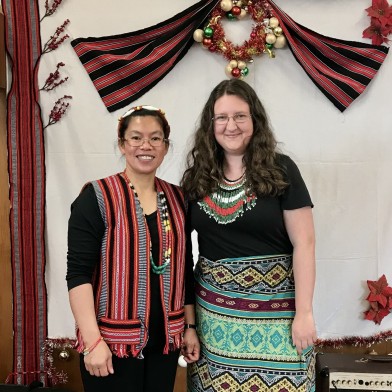Want to experience the unforgettable joy of Christmas? Then the Filipino-style is just for you. In the Philippines, the festive spirit of the holiday isn’t just seen and heard – it’s heartfelt experience that is uniquely Filipino.
Get ready to dive into the top 10 ways to celebrate a vibrant Filipino Christmas.
1. It is about Jesus.
For many around the world, Christmas is all about shopping and gift exchanges. But in the Philippines, it's a festive and joyful celebration of Jesus Christ's birthday! With 90% of Filipinos practicing Christianity, Christmas here isn't just a holiday - it's a vibrant and heartwarming celebration of the Messiah's arrival.
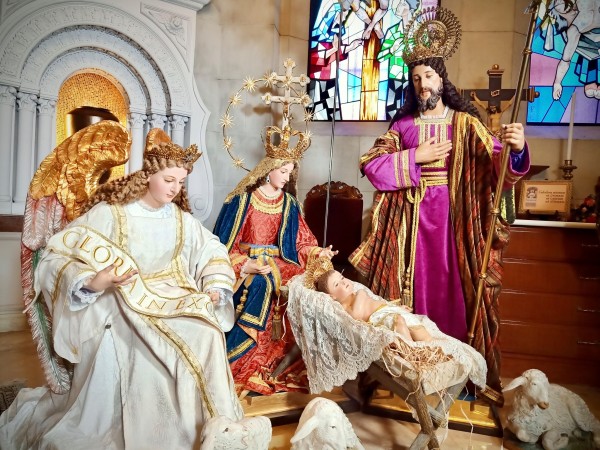
Bele de Manila. Photo: Manila Cathedral
2. Longest Christmas celebration in the world
Yes. You read that right.
The Philippines holds the record for the world's longest Christmas celebration, as noted by CNBC. The festive season kicks off in September, marking the beginning of the "Ber" months (September, October, November, and December), and continues until January 6, culminating with the Feast of the Three Kings.
Beyond religious customs, Filipinos are known for their love of festivities and community gatherings. Nearly every month, various regions and provinces host fiestas, where communities come together to share food, showcase vibrant costumes, and perform traditional dances in the streets.
Of all these celebrations, Christmas is especially significant in the Philippines, prompting an extension of the holiday season over a prolonged period. This extended celebration also boosts the economy, as consumer spending on decorations, gifts, and other festive items increases during this time.
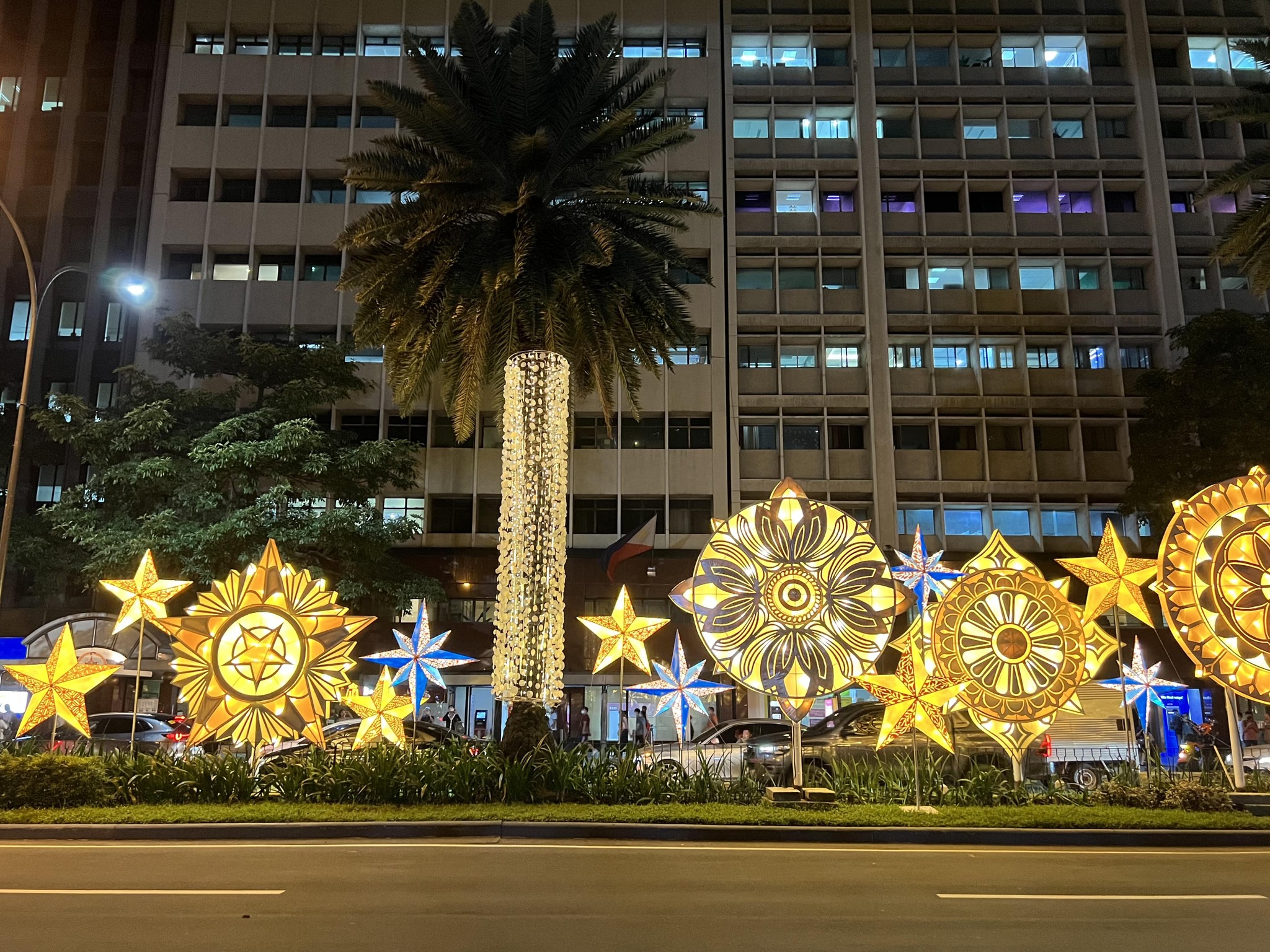
Christmas decorations at Ayala Avenue in Makati City. Image: Ayala Triangle Gardens FB Page.
3. Completing the Nine Mornings
If 90% of the Filipino population is Christian, 78% of whom are Catholics, it has been a tradition for them to complete the Nine Mornings, known in Tagalog as 'Simbang Gabi' and in Spanish as 'Misa de Gallo.'
The Nine Mornings involve a series of nine dawn masses, typically starting on December 16th and ending on Christmas Eve.
These masses are held very early in the morning, often as early as 4:00 or 5:00 AM. This tradition is deeply rooted in Filipino culture and is seen as a way of preparing for the birth of Jesus Christ. It’s also a community affair, bringing together people from all walks of life to celebrate the festive season.
Many Filipino Catholics believe that completing the nine masses will make their prayers and Christmas wishes would come true.
The Simbang Gabi is more than a religious ritual; it's a cultural experience that embodies the warmth, unity, and strong faith of the Filipino people during the Christmas season.
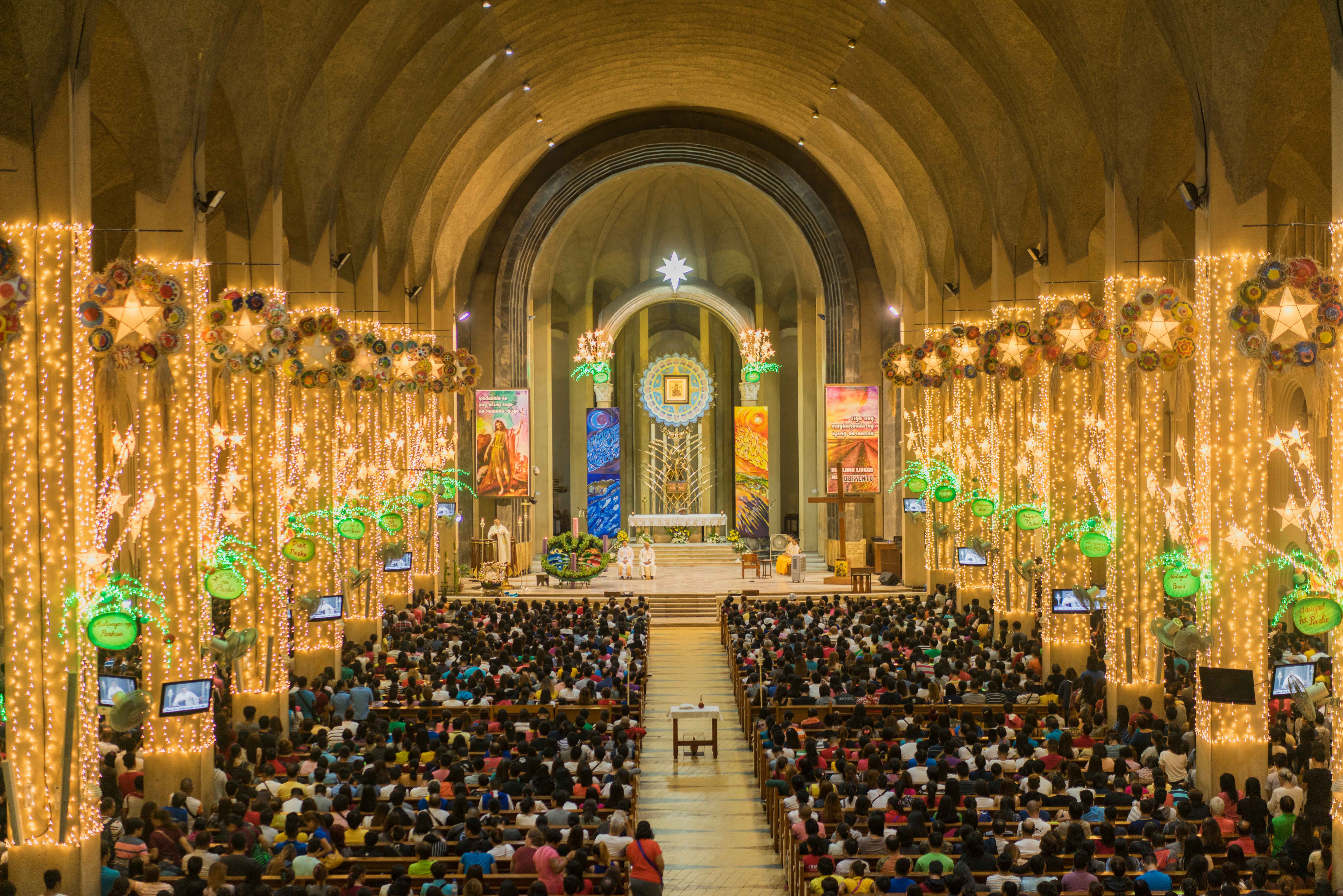
Nine Mornings in the Philippines. Photo: National Shrine of Our Mother of Perpetual Help.
4. Filipino Christmas delicacies
Once the Nine Mornings kickstarted, Filipinos can also start to dig in with their favourite Christmas treats – the Putong Bumbong and Bibingka.
Puto Bumbong is a unique and colourful Filipino rice cake. Its distinctive purple colour comes from a special type of sticky rice called “pirurutong” which is naturally tinted.
To make Puto Bumbong, the rice soaked in water, then ground, and stuffed in bamboo tubes, known as “bumbong.” These tubes are then steamed until the rice cake inside becomes soft and chewy.
After steaming, the Puto Bumbong is typically served with melted butter or margarine, freshly grated coconut, and a sprinkling of sugar.
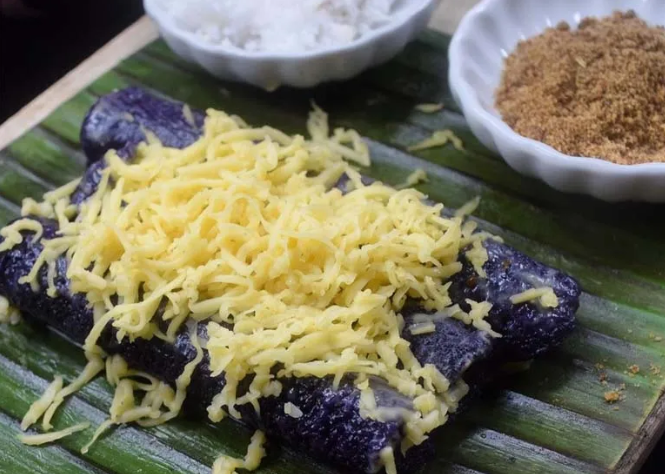
Puto Bumbong. Photo: @oinikapampangan
From one rice cake to another, Bibingka is another tradition Christmas treat for Filipinos. It is made from rice flour, coconut milk, and water. The mixture is poured into a clay pot lined with banana leaves, which impart a distinctive flavour to the cake.
It’s then cooked over charcoal, with more charcoal placed on a cover above the pot to ensure even cooking. The result is a soft, fluffy cake with a slightly crispy, charred exterior, with a tinge of smoky sweet flavour in it.
Bibingka is often served warm, topped with butter, sugar, grated coconut, and sometimes slices of salted egg. Best paired with either a hot cup of coffee or a hot coco.
Puto Bumbong and Bibingka are often sold outside churches during the Nine Mornings, providing a warm, sweet treat in the early morning hours.
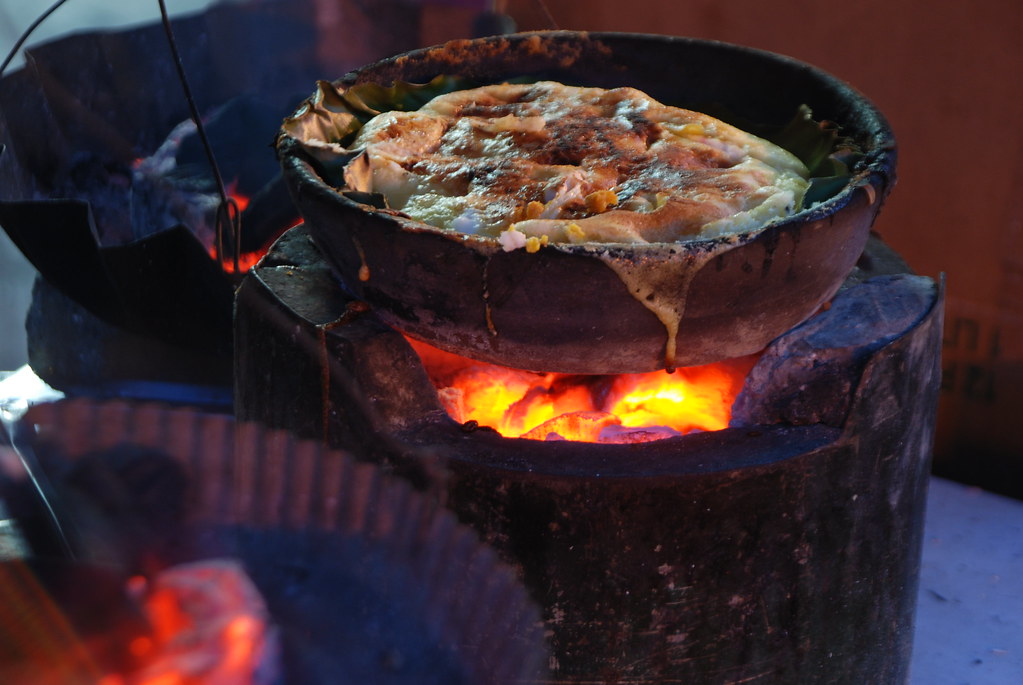
Bibingka cooked in a charcoal stove. Photo: Flickr
5. Shining and blinding stars
Most of the Christmas decorations in New Zealand are Christmas balls, candy canes, Christmas stockings, and Santa Claus. The star only goes on top of the Christmas tree, but in the Philippines, the star is the leading star of the Filipino Christmas decorations.
Filipinos called these hanging stars as ‘Parol’ [pa-rol].
A Parol is a traditional Filipino Christmas lantern that symbolises the Star of Bethlehem that guided the Three Wise Men to the manger where Jesus Christ was born. The word "parol" is derived from the Spanish word "farol," meaning lantern or light.
Parols are a quintessential part of Christmas celebrations in the Philippines and are used to decorate homes, schools, streets, and commercial establishments. They come in various sizes and designs, but traditionally have a five-pointed star shape.

Parols in the Philippines during Christmas season. Photo. Philippine News Agency, Flickr, and Philippine Information Agency
The original design of the parol was simple, crafted from bamboo strips and Japanese paper (papel de Japon) and illuminated by a candle. Today, parols can be made from a wide range of materials including plastic, metal, glass, and capiz shells, and are often adorned with vibrant, colorful designs and patterns.
They are typically illuminated by electric lights, making them a dazzling sight during the night.
In many ways, the parol is a symbol of the Filipino identity and their deep-rooted Christian faith.
6. Move over, Mariah Carey!
Instead of 'All I Want for Christmas Is You,' Filipinos embrace 'Christmas in Our Hearts' during the holiday season.
Each Christmas, Mariah Carey's iconic jingle, starting with 'Aaahhh I… don’t want a lot for Christmas,' is popular worldwide. However, in the Philippines, the iconic Christmas song begins with 'Whenever I see girls and boys selling lanterns on the street.'
This beloved Filipino Christmas song, released by Jose Mari Chan with his daughter, Liza, in 1990, has become an anthem in the country. Its lyrics convey a message of love, peace, and joy, reflecting the true spirit of Christmas. It emphasizes the importance of sharing these values not only during the holiday season but throughout the year. The melody is uplifting and has a catchy, sing-along quality, making it a staple in Christmas celebrations across the Philippines.
'Christmas in Our Hearts' holds a special place in the hearts of many Filipinos. It has become synonymous with the start of the Christmas season in the Philippines, often played in homes, shopping malls, and on radio stations as early as September, when the country begins its long Christmas celebration.
7. The season of never-ending carolling
Filipinos' love for singing shines even brighter during the Christmas season. Equipped with homemade musical instruments, such as tambourines crafted from flattened bottle caps and wire, and drums made from tin cans, people of all ages take to the streets to sing Christmas carols.
During this festive period, it's a common practice for carolers to visit homes, often in exchange for small gifts or tokens. Homeowners might greet them with offerings of money or food, or sometimes they might apologetically say "patawad" (sorry) if they have nothing to offer.
While some groups carol to collect funds for charitable causes, others simply enjoy the festive spirit through singing. For the children who go caroling, receiving a few coins for their musical efforts brings great joy.
The repertoire of Christmas carols in the Philippines is diverse, including English classics like "Silent Night," "O Holy Night," "We Wish You a Merry Christmas," and "Santa Claus is Coming to Town."
But it's the original Filipino Christmas songs such as "Ang Pasko ay Sumapit’ (It's Christmas time) and "Sa Maybahay ang Aming Bati" (Greetings to the homeowners) that truly resonate and are beloved hits during the season.
8. The vital role of Ninong and Ninang
Philippines includes the Ninongs and Ninangs. "Ninong" refers to a godfather, and "Ninang" signifies a godmother.
These godparents, typically appointed by the child's parents at baptism or confirmation, commit to helping raise the child within the Catholic Church, providing moral support and occasionally financial assistance.
At Christmas, Ninongs and Ninangs present their godchildren, known as "inaanak," with Aguinaldo, which are gifts given, either as money or material items. This practice symbolizes affection and care and serves to reinforce the bond between godparents and godchildren.
Receiving gifts from Ninong and Ninang, artwork by Faith Sensei. Photo: Devianart.com/Pinterest
9. Noche Buena instead of Boxing Day
"Noche Buena," a notable tradition observed in numerous Spanish-speaking countries, is celebrated on Christmas Eve, December 24th.
Reflecting its historical ties with Spain, which colonized the Philippines for over three centuries, the Philippines prominently celebrates this event on the eve of Christmas rather than Boxing Day, a custom prevalent in many British Commonwealth nations.
Translated to "Good Night," Noche Buena is marked by a grand feast enjoyed on this evening, often following the midnight Mass known as "Misa de Gallo." This event is characterized by its emphasis on family, where relatives come together to enjoy a meal late in the night, culminating around midnight. The cuisine for Noche Buena varies significantly among different cultures and regions, but is typically characterised by its uniqueness and extravagance, reserved for this specific celebration.

Filipino family Noche Buena. Image designed by Carla Teng.
In the Filipino context, the feast often features dishes like Lechón (roasted pig), ham, salads made from fruits or coconuts, Queso de Bola (cheese ball), and traditional sweets such as Bibingka and Puto Bumbong.
Noche Buena transcends being merely a dinner; it's a joyful, family-centered celebration that often involves exchanging gifts, singing Christmas carols, and engaging in other holiday festivities, all embodying a sense of unity and goodwill.
10. Christmas Bonus and 13th Month Pay
It is indeed a season to be jolly, especially for employees in the Philippines, as providing a Christmas bonus and 13th month pay have both cultural and legal underpinnings. The 13th Month Pay, mandated by Philippine labor law under Presidential Decree No. 851, was established by then-President Ferdinand Edralin Marcos in 1975.
Its primary objective is to assist employees with additional expenses during the Christmas season. This payment is required to be made no later than December 24th each year, a mandate enforced by the Philippines’ Department of Labor and Employment (DOLE) to ensure employees receive this benefit in time for the Christmas season.
On the other hand, the Christmas bonus in the Philippines is not legally required and is granted at the employers' discretion. However, many companies choose to give their employees a bonus as a gesture of goodwill and appreciation for their hard work over the past year. This bonus may be in the form of cash, a gift check, or other gifts.
These financial benefits significantly aid employees during the Christmas season, a time of substantial celebration and family gatherings in the Philippines. They enable employees to afford gifts, prepare festive meals, and fully engage in the holiday spirit without the burden of financial strain.
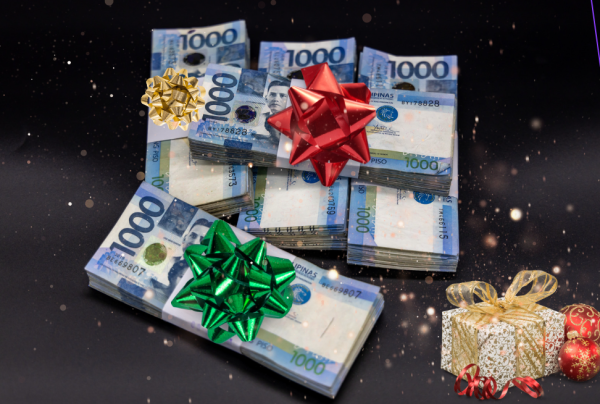
Christmas bonus and 13th month pay. Image designed by Carla Teng.
If you are aiming for a peaceful and serene Christmas, then the Filipino-way is not for you. But if you are keen for a festive spirit like no other, then Christmas in the Philippines is just the right place to celebrate this season of giving and sharing.
Christmas in the Philippines is a unique and vibrant celebration, renowned for being one of the longest and most festive in the world. It reflects a mix of Western and native Filipino traditions, influenced predominantly by the country's Catholic heritage.
The Filipino Christmas is a joyful fusion of religious devotion, family, and merrymaking, deeply embedded in the cultural fabric of the Philippines.
Maligayang Pasko sa inyong lahat (Merry Christmas to everyone).
-Asia Media Centre


